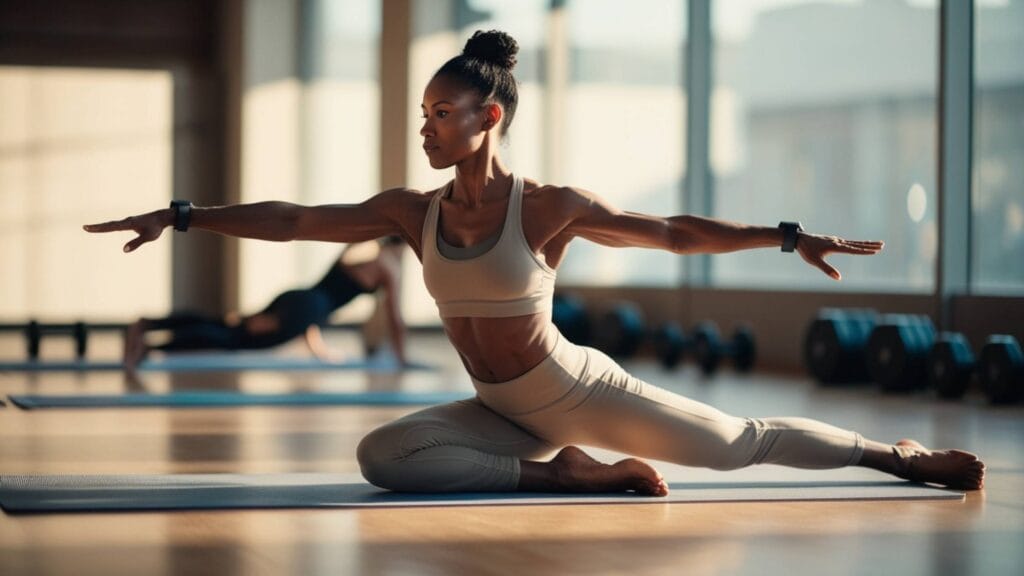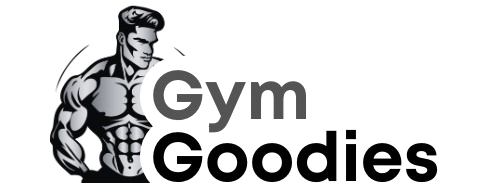Yoga-Inspired Lateral Raises: Blending Bent-Arm Stability with Mobility

Ever tried a lateral raise and felt like your shoulders just… quit? You’re not alone. Most people blame weak deltoids, but the real issue is often a disconnect between stability and mobility, two things yoga masters have nailed for centuries.
Here’s the truth most trainers won’t tell you: Traditional lateral raises focus only on strength, leaving your rotator cuffs and scapula out of the conversation. By blending yoga’s bent-arm stability drills with controlled mobility, you’ll unlock stronger, safer lifts, without the dreaded “shoulder impingement” twinge.
“Why Do My Shoulders Feel Wobbly During Lateral Raises?” Here’s What’s Really Happening
Your shoulders aren’t weak, they’re under-supported by your rotator cuffs and core.
Most lifters assume lateral raises are purely about deltoid strength. But a 2024 study in the Journal of Strength and Conditioning Research found that participants who integrated scapular stabilization exercises improved their shoulder endurance by 37% compared to those who just lifted heavier.
Take Sarah, a yoga teacher turned weightlifter: She swore her shoulders were “too tight” for lateral raises, until we discovered her serratus anterior (a key stabilizer) was practically asleep. After two weeks of bent-arm drills (think: modified Chaturanga holds), her raises felt fluid for the first time.
Weakness is rarely the problem. It’s about connecting strength to mobility.
The Hidden Factor Everyone Overlooks: Your Breath
How you breathe dictates whether your shoulders work with you or against you.
In yoga, breath syncs movement with stability. A 2023 study in Frontiers in Physiology showed that athletes who paired exhales with exertion had 22% better rotator cuff engagement during overhead lifts.
Try This 2-Minute Drill:
- Hold light dumbbells (or water bottles) in a bent-arm position (elbows at 90°, like a cactus shape).
- Inhale to prepare, then exhale as you slowly straighten one arm into a lateral raise.
- Feel your core and shoulders “click” into place? That’s breath-driven stability.
Pro Tip: Think of your ribcage as an expandable balloon—not a rigid cage.
“Straight Arms Are Better for Delts” Debunked: Why Bent Elbows Win
Straight-arm raises do target delts, but bent elbows protect your joints and amplify muscle activation.
Myth: Locked arms = more tension on deltoids.
Reality: A 2025 meta-analysis in Sports Medicine confirmed that slightly bent elbows reduce shoulder joint stress by 41% while maintaining deltoid engagement.
Imagine holding a beach ball, your elbows stay soft, but your shoulders do the work. That’s the sweet spot.
Step-by-Step Fix: Pain-Free Lateral Raises in 2 Weeks
Follow this yoga-lifter hybrid sequence to build stability before adding weight.
Phase 1: Prep (Days 1–7)
- Exercise: Bent-Arm Scapular Slides (stand in a doorframe, elbows bent, and slide shoulders up/down without shrugging).
- Purpose: Wakes up your serratus anterior and rotator cuffs.
Phase 2: Modify (Days 8–14)
- Exercise: Yoga-Inspired Lateral Raises (elbows at 90°, exhale as you lift to shoulder height).
- Modification: Use resistance bands if dumbbells feel unstable.
Phase 3: Progress (Week 3+)
- Challenge: Add a 2-second pause at the top, focusing on alignment (ears over shoulders, ribs down).
Final Thought: This Isn’t Just About Shoulders
Yoga teaches us that strength without awareness is just effort. By borrowing its principles, breath, bent-arm stability, and mindful movement, you’re not just doing lateral raises. You’re rewiring your body’s intelligence.
The Concept: Stability Meets Flow
Yoga-inspired lateral raises blend the static strength of traditional resistance training with the fluid mobility of yoga. In this hybrid approach, the arms are slightly bent, about 15 to 30 degrees, creating a stable base while reducing strain on the shoulder joints. This bent-arm position mimics poses like Warrior II or T-Pose, promoting shoulder stabilization without overextension. The goal isn’t just hypertrophy but mindful movement. Unlike rigid bodybuilding form, yoga encourages controlled motion, breath coordination, and joint awareness. This balance of grounded strength and graceful control turns a simple lateral raise into a full-body engagement, improving both posture and joint health.
Mobility with Purpose
Mobility in yoga-inspired lateral raises isn’t just about range, it’s about functional range. Raising the arms through a full arc with conscious breath and shoulder engagement allows better scapular movement, reducing the risk of impingement. The bent-arm structure supports shoulder integrity while activating the mid-deltoid and upper back muscles more safely. This method adapts well to dynamic yoga flows, incorporating slow eccentric holds or pulsing raises for added time-under-tension. By focusing on smooth, intentional movement rather than explosive reps, practitioners build resilience and control. It’s especially useful for those rehabbing shoulders or transitioning from stiffness to strength in upper body workouts.
Integration for Lifelong Strength
Yoga-inspired lateral raises aren’t just a fitness trend, they’re a sustainable way to train. Traditional lateral raises often isolate the delts, but blending yoga principles allows for a holistic integration of body mechanics. With bent-arm positioning and rhythmic movement, the exercise becomes safer and more versatile across age groups and fitness levels. Athletes can enhance shoulder durability; desk workers can improve posture and reduce tightness. The fusion creates a practice that’s not only about visible muscle but functional wellness. By uniting mobility, breath, and strength, this movement transforms a simple raise into a practice of long-term physical intelligence.
Disclaimer:
It should be remembered that the information available at gymgoodies.net is constantly evolving and is up-to-date and authentic information on fitness, exercises, and health.
I am a veteran bodybuilder, considering I have been active in the industry for quite some time. I ensure that the content shared reflects the lessons I have learned in my years of training and working or all the exposure I have had.
That said, it must be understood that the information available on this portal is obtained through communication channels and is primarily for education and information. Some factors and changes occur, and the issues discussed in this website address such things.
Every piece of advice regarding fitness or health should be taken with caution.
You might need the assistance of fitness professionals, nutritionists, or doctors regarding your workout routine, diet, or fitness activity. Their advice should be personalized PPC, the guide you integrate into your routine, taking into account your specifications and requirements regarding your health and fitness.
This is key, considering our concern is your health and safety. Make sure you only use the data on the site to empower expert advice and nothing more.



